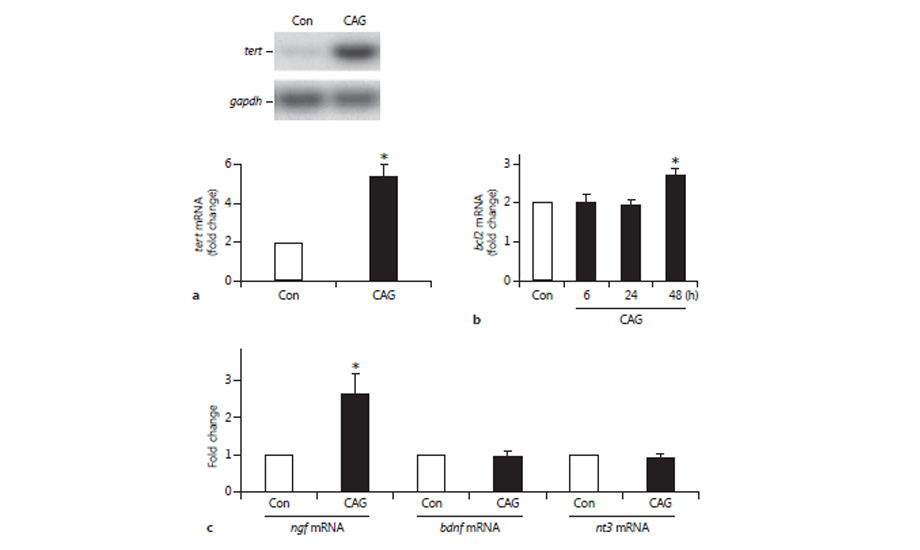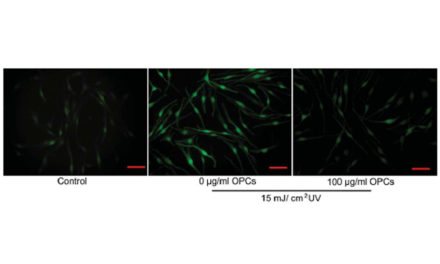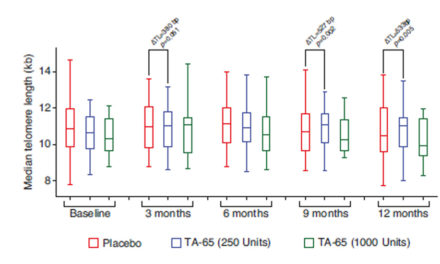Cycloastragenol Is a Potent Telomerase Activator in Neuronal Cells: Implications for Depression Management
Fanny C.F. Ip a–d, Yu Pong Ng a–d, H.J. An a Ying Dai a–c, Hai Hong Pang a, Yue Qing Hu a, Allison C. Chin e, Calvin B. Harley e, f, Yung Hou Wong a–d, Nancy Y. Ip a–d
a Division of Life Science, b Molecular Neuroscience Center, c Biotechnology Research Institute, and d State Key Laboratory of Molecular Neuroscience, The Hong Kong University of Science and Technology, Hong Kong , China; e Geron Corporation, and f Telome Health Inc., Menlo Park, Calif. , USA
Abstract
Cycloastragenol (CAG) is an aglycone of astragaloside IV. It was first identified when screening Astragalus membranaceus extracts for active ingredients with antiaging properties. The present study demonstrates that CAG stimulates telomerase activity and cell proliferation in human neonatal keratinocytes. In particular, CAG promotes scratch wound closure of human neonatal keratinocyte monolayers in vitro. The distinct telomerase-activating property of CAG prompted evaluation of its potential application in the treatment of neurological disorders. Accordingly, CAG induced telomerase activity and cAMP response element binding (CREB) activation in PC12 cells and primary neurons. Blockade of CREB expression in neuronal cells by RNA interference reduced basal telomerase activity, and CAG was no longer efficacious in increasing telomerase activity. CAG treatment not only induced the expression of bcl2 , a CREB-regulated gene, but also the expression of telomerase reverse transcriptase in primary cortical neurons. Interestingly, oral administration of CAG for 7 days attenuated depression-like behavior in experimental mice. In conclusion, CAG stimulates telomerase activity in human neonatal keratinocytes and rat neuronal cells, and induces CREB activation followed by tert and bcl2 expression. Furthermore, CAG may have a novel therapeutic role in depression.
Keywords
cAMP response element binding · NGF · Astragalus membranaceus · Saponin · Telomere · Telomerase reverse transcriptase (…)










